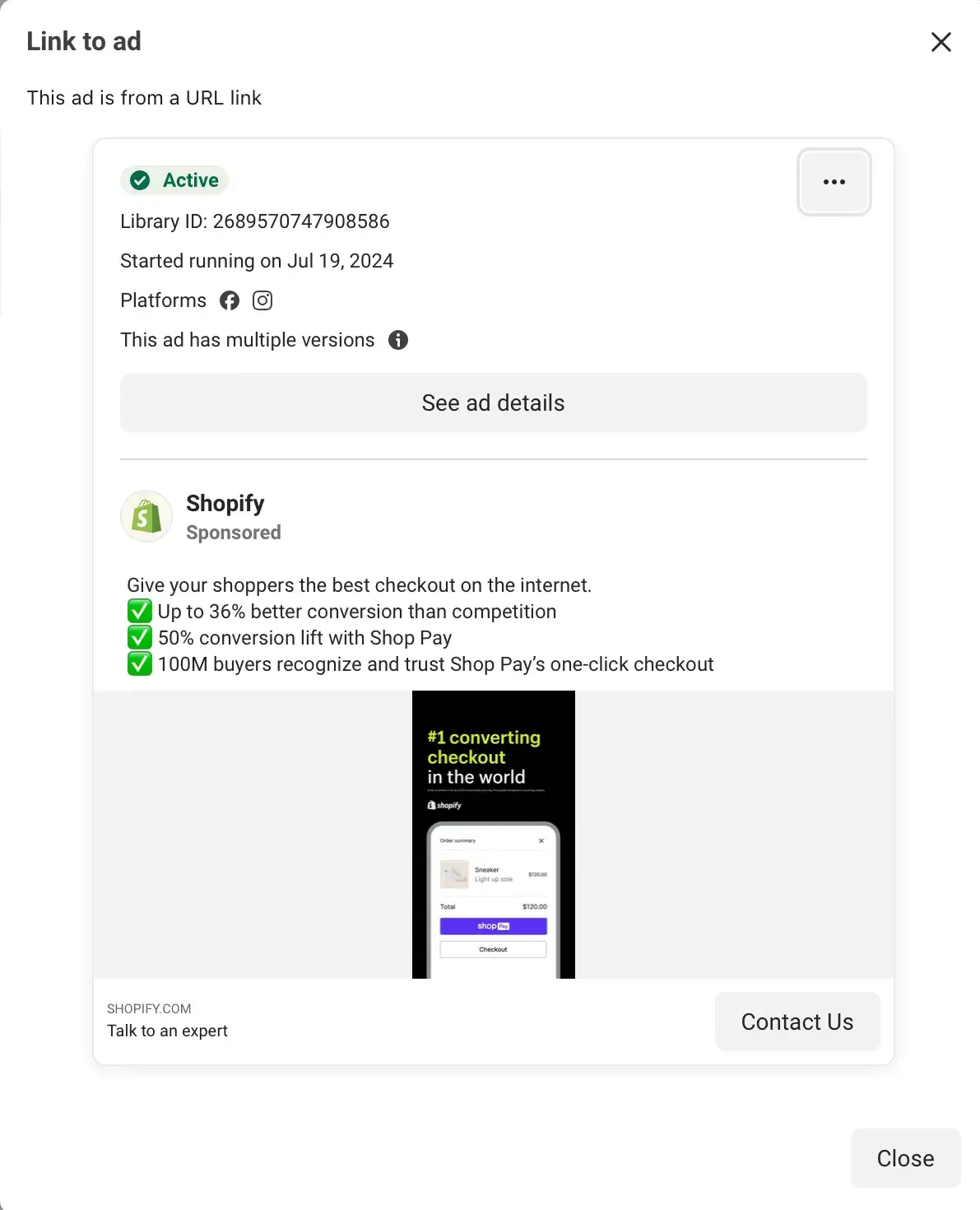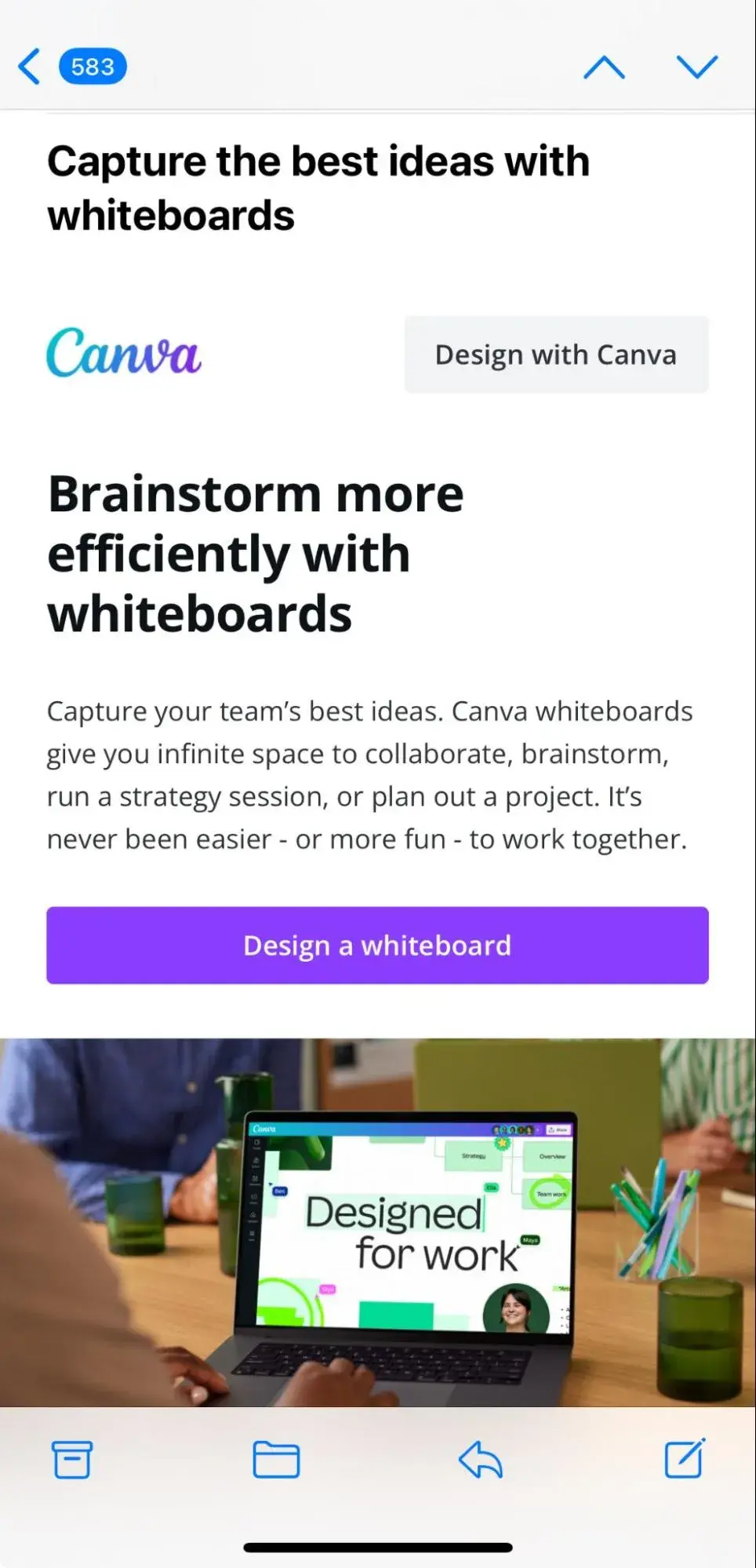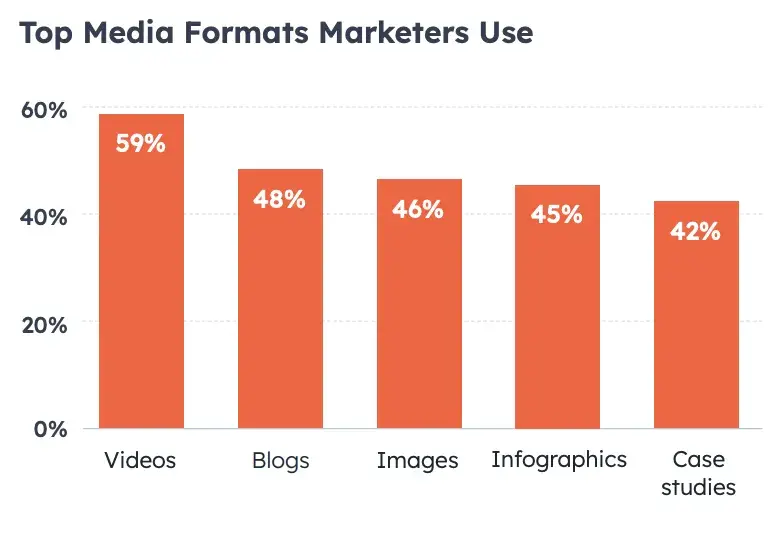Recently, I spoke with Nathaniel Miller, head of marketing at HarvestIQ, and Ruslan Halilov, chief marketing officer at BlueDotHQ, to learn more about how to nail cross-channel marketing effectively. Below, I'll share their insights.
Table of Contents
What is cross-channel marketing?
Cross-channel marketing is a method brands use to connect with customers across multiple channels (i.e., email, social media, ads, SMS) that creates a logical progression for your target audience to progress from one stage to the next. These channels work together and provide context for the messages your persona receives as they go from one channel to the next.
I asked Ruslan Halilov and Nathaniel Miller to give me a quick definition of cross-channel marketing. Halilov told me, “Cross-channel marketing simply means incorporating multiple channels into your marketing strategy.”
Multiple channels means incorporating your social media accounts, websites, and email campaigns to reach customers where they are and offer them different but relevant experiences through the customer journey.
Miller suggested that cross-channel marketing only works well if you create a smooth experience across your entire brand. He said, “Whether it’s seeing an ad on Facebook, opening an email, or landing on your website, everything should feel connected. The idea is to keep your message consistent and relevant as people jump from one platform to another.”
If you’re in marketing or sales, you might be thinking, “What is the difference between cross-channel and omnichannel marketing? Isn’t that the same thing?”
Although these two tactics are closely related, they’re different. I asked Miller and Halilov to help me understand the differences between these strategies.
The Difference Between Cross-Channel & Omnichannel Marketing
It's important not to confuse cross-channel marketing with omnichannel marketing. Both strategies depend on:
- Multiple marketing channels.
- Monitoring metrics.
- Customer interactions.
However, according to Miller, there is one key difference.
He told me, “Cross-channel is about getting all your platforms to play nice together — like linking your email campaign with social ads so your audience gets a cohesive experience. Omnichannel takes it up a notch by putting the customer at the very center. It’s less about channels and more about creating one ongoing, unified experience that feels totally personalized.”
I know it might sound like bringing all of your channels together is a challenge. Cross-channel marketing is somewhat simpler than omnichannel marketing.
With cross-channel marketing, you're bringing each of your platforms into unison with each other so that they build off each other and amplify their impact. You’re creating content around the same message, but in a way that fits the platform. This might mean tweaking your copy for social media, creating video content, or sending emails.
For example, if a prospect reads one of your blog posts looking for a solution to their pain points, they might receive a related email later mentioning the same topic. Then, when they scroll through social media, they might see an ad with a catchy headline about how your product solves the problem.
Each platform functions differently, and your content supports those roles.
Why use cross-channel marketing?
Regardless of your industry, understanding your target persona is key to an effective marketing strategy. I have found that you can‘t market effectively if you don’t have a thorough understanding of who you're marketing to. Otherwise, it’s like blowing on a dandelion — you’re just scattering marketing efforts into the wind and hoping that something lands correctly.
So, instead of scattering your efforts in various directions, take my advice: You need to understand your target persona and how they interact with brands and make buying decisions. This means plugging into the channels where your customers get the information to make these decisions and looking hard into how they want to receive information.
There are a ton of benefits to doing this, too.
Cross-Channel Marketing Benefits
When I asked Nathaniel about the benefits of cross-channel marketing, he told me, “Cross-channel marketing keeps your message consistent across platforms, creating a seamless experience for your audience. It means better engagement, higher conversions, and a more cohesive brand presence.”
Let’s take a closer look at the benefits of deploying a cross-channel business marketing strategy.
1. Increased Engagement
With the sheer volume of ads consumers see in a day, many have gone (me included) what I like to call “ad-blind.” In other words, your customers scroll past your PPC ads, boosted posts, and marketing emails without giving them a thought.
However, if I've been working on figuring out a complex issue for my team and have already come across a brand that I view as an authority on that issue, receiving a marketing email or seeing an ad about that topic is more likely to catch my attention and not get deleted in my daily inbox cleaning efforts.
Consumers respond positively to personalized content. For example, calls to action that contain customized content perform better than generic CTAs.
2. Proven ROI
As Miller told me, cross-channel marketing leads to higher conversions. Combining your efforts with a cross-channel marketing approach can:
- Break down silos that decontextualize metrics.
- Clarify the touch points to see how a viewer became a lead and customer.
- Help you refine your marketing approach.
For example, if you consider your marketing efforts from a single-channel or multi-channel approach, your email marketing team may be focused on getting opens or CTA impressions. Meanwhile, your social media team may be focused on getting impressions or likes. Finally, your content team may be looking at blog views.
To me, separating these channels to an individual level is somewhat chaotic and can lead to false numbers. So, not only does cross-channel marketing create a clearer roadmap for refining your marketing efforts, but it also helps to avoid falling into the traps of vanity metrics.
3. Greater Brand Presence
Creating a marketing campaign across your available channels will increase your brand presence. By doing this, your leads will be saying, “I’ve seen that brand everywhere!”
The more you promote your brand, the more potential leads will see it. It reminds me of the saying, “Curiosity killed the cat.” With appropriate and consistent messaging across all platforms, your leads will be curious enough to check out your brand, especially if you promise to solve their problems.
4. Greater Customer Loyalty
Solving your customers’ problems leads to an improved brand experience for consumers, which increases a buyer's sense of delight.
I’m pretty sure this is Marketing 101, but, a delighted customer is a loyal customer, and combining loyalty with delight is the recipe for creating your most powerful marketing tool: a brand ambassador.
Consumers generally want a reason to keep coming back. It's easier to know that you have a go-to resource for a given issue or need than to go back to the drawing board and research, compare, and test solutions.
For many buyers, it‘s simply more convenient to upgrade or purchase additional services from a provider they already know and trust — even if it’s slightly more costly — than to find someone brand new who can do the same thing. When a customer trusts you and genuinely wants to help them succeed and your unified marketing and customer service efforts demonstrate that, you remain front of mind as an authority.
Why Cross-Channel Marketing Can Be Challenging
Although Halilov mentioned that cross-channel marketing is slightly easier to implement than omnichannel marketing, it’s still not without its challenges. I asked both him and Miller to guide me through some of its pitfalls so I could learn (and share!) how to avoid them.
Here’s what they told me.
1. Staying consistent is challenging.
Halilov mentioned to me that the biggest challenge he finds with cross-channel communication is staying consistent. He said, “In my opinion, the key challenge here is to keep your messaging consistent on every platform while also balancing that with customizing your campaign for every platform.”
Think about it: You need to align multiple channels and ensure each content on your various platforms is relevant. As I’ve learned, the more cohesive your strategy is, the better it will be.
Is this impossible? No. But is it challenging? It can be.
2. Messaging can become repetitive.
Consistency is key to cross-channel campaigns. However, sometimes, remaining consistent can become boring. Miller warned me about this. He said, “One of the biggest challenges is keeping your messaging unified without being boring or repetitive.”
This means you’ll need to work with a copywriter and your marketing team to create relevant but different copy for your marketing campaigns. So, while it can be challenging, there’s also a viable solution.
3. Tracking metrics can be difficult.
After learning about the various channels that must be combined for cross-channel marketing to work, I wasn’t surprised to learn that both Nathanial and Ruslan thought tracking metrics could be a bit of a challenge. Ruslan told me, “Another challenge is tracking the performance of your campaigns. It's simple: the more channels you use, the more data you get, and the more effort it takes to analyze it.”
However, Ruslan did mention several analytical tools you can use. With the right tools, tracking your metrics is less of a problem.
Cross-Channel Marketing Examples
Let’s take a look at a couple of cross-channel marketing examples to get a better idea of how they work. It’s important to understand that cross-channel marketing isn’t just about sales. Instead, it’s about creating a more unified customer experience.
The first example of a cross-channel campaign comes straight from my Facebook notifications.
1. VistaPrint
I’ve been thinking quite a bit about printing new marketing materials for my business recently. With Facebook’s recent addition of ads in users’ notifications, I saw an ad that said, “Get seen with bold signs.” This ad caught my eye because VistaPrint is a company I have used to print mailers and other marketing materials.

VistaPrint doesn’t just use Facebook to target their customers, though. If I had just seen their ad in my notifications, I likely would have skipped right over it. Instead, they also run YouTube ads and television commercials. Check out this commercial, for example:
Notice that the intent of the commercial is similar to the Facebook notification. The commercial’s intent is to prove that you can get seen by your customers when you use VistaPrint for your printing. The Facebook notification says the same thing, just with less copy.
Instead of focusing on making a sale, the ad and the YouTube commercial speak directly to my pain points and provide a solution: get more business with marketing materials that stand out. The more I see VistaPrint in my notifications, newsfeeds, and television, the more I’m reminded that I need to order new business cards and signs.
2. Shopify
Shopify cross-channel communications is another great example of this marketing strategy at work. They are pros at using various marketing channels — channels I wouldn't think of right off the bat. Here’s an example of a Shopify Facebook ad that is straight from their ad library.

Looking at the details of this ad, I can see they’re running it across the Meta platform, both on Facebook and Instagram. So, based on their target audience, they might see the Shopify ad in their Facebook feeds and then again on Instagram as they scroll through the app. Choosing to run this ad on both platforms ensures Shopify catches all of its audience members multiple times.
Shopify doesn’t stop there with its marketing. Instead, they’ve found a creative place to put their ads. Nearly all of the podcasts I listen to feature a Shopify ad. Typically, the Shopify ad is in the middle of the show, meaning that users will hear it because they’re invested in the content. Shopify also partners with content creators and gets them to read their ads. This helps create trust with the listeners.
If I sold physical products on my website or in a storefront, I would consider using Shopify — just because I hear about it so much.
3. Canva
Canva also uses cross-channel marketing to bring in new leads. As a former teacher, I used Canva quite often to create presentations. However, when I left the classroom, the way I used Canva changed.
Here’s how they draw me as a customer with their emails now:

Instead of using teacher language, they use business lingo (strategy sessions, anyone?). Using the right wording in your ads and emails can capture the right audience that you want to focus on. For example, if this email mentioned something like, “Use this whiteboard to teach a virtual lesson,” I would have ignored it. I’m no longer in the classroom so that no longer appeals to me.
Imagine seeing this email in your inbox, and then you see this YouTube ad before a video:
Chances are you’ll remember Canva’s functionality and be interested enough to check it out the next time you need to create something for your job.
How to Get Started with Cross-Channel Marketing
When starting with cross-channel marketing, it‘s important to remember that you’ll likely need to tweak your approach and make ongoing optimizations as you get better at it. The more data you collect, the better you‘ll understand your customers’ cross-channel buying experience, giving you insights into improvements you can make across each channel.
Here’s how to launch a cross-channel marketing campaign of your own:
1. Create your customer persona.
If you haven't clearly defined your customer persona, do so before diving into cross-channel marketing. Defining your customer persona is the first step and the backbone of any successful cross-channel strategy. This helps you have unified data within a customer data platform (CDP).
Your business's customer relationship management (CRM) platform will often be able to manage this data, so you can likely get started by building on your existing tools. For example, if you use HubSpot’s customer platform, you can create customer persona markers, which will help you organize your data better.
2. Set up your analytical tools across your CDP.
Speaking of CRMs and CDPs, Miller made a point about how important it is to integrate your tech. He suggested, “Use tools like HubSpot to manage campaigns across channels and connect your CRM for better tracking so nothing falls through the cracks.”
Regardless of the specific CDP you choose, you‘ll want to ensure you have the analytics data available to capture each of your leads’ touchpoints. Remember, Halilov told me that tracking data can be a challenge, but there are analytics tools to help.
Typically, this will involve tracking URLs or browser cookies to associate online actions with an individual lead‘s contact profile. You’ll want to be able to see which emails they‘ve been sent and have interacted with, which social media campaigns have made an impression on them, the blog posts that they’ve read, PPC campaigns they've clicked on, and conversations that your sales or service team have had with that customer. Whatever channels you have used for marketing — or will use — need to be reflected within your CDP.
3. Clarify your customer segments.
What I find neat about leads and customers is that while they’re similar, they’re not all the same. You can segment customers together based on their interactions with your brand. Based on the collected data, you can determine which customer belongs to which segment.
Ideally, your CDP will be able to create meaningful reports across customers that help you visualize and understand this data. But, even if you have to do some number-crunching by hand, your third step to getting started with cross-channel marketing is to understand the varying segments within your customer persona.
It’s easy to think your customer persona encompasses a single customer profile. However, the longer I’ve been in marketing, the more I realize that customers' interactions with your brand can vary from one lead to the next. These interactions can distinguish between a successful cross-channel campaign and a failure.
4. Analyze your customer data to uncover trends.
Once you’ve collected enough data, you’ll need to analyze it to identify trends and patterns. Miller told me this can “help you understand different paths your customers take and make sure each touchpoint feels seamless.”
For example, you'll likely notice that most of your leads who have already converted into customers have something in common. Those commonalities could be the minimum number of interactions before converting, the average time spent interacting with your marketing efforts before converting, or even specific campaigns with high conversion rates.
By analyzing your customer data and creating a clear mental picture of the segments within your contact database, you can determine which channels to prioritize and the type of content that performs best for your business across each channel.
Pro tip: I find it important to document and contextualize each interaction so that you can successfully cater your content to your customers.
5. Use smart content to unify your interactions.
If your CDP is integrated with your content management system (CMS), I have good news! This step will likely be easier than if they‘re operating independently of each other. Even if they aren’t integrated, you can still be successful with cross-channel marketing; it may just require more hands-on work to personalize your content.
With your customers analyzed and segmented based on their interactions, your next step is to begin the process of customizing your content so that it matches each viewer's needs.
The most direct way of accomplishing this is to utilize smart content. Smart content is dynamic content determined by a certain set of criteria. To put it simply, smart content says, “If a viewer has done this, show them that.” This is why it‘s necessary to have all of your customer interaction data unified within your CDP. You’ll be able to identify who has done what clearly, so your subsequent interactions will be built upon established touchpoints.

If your CMS is able to utilize smart content, create content — or at least sections of content — based upon the segmented lists you've broken your contacts into.
I find giving an example helpful to explain how smart content works. Let‘s say you’re publishing a blog post about one of your core services. You can customize this blog post for various segments. It might look like this:
- Based on past interactions, the warmest leads will see a CTA to contact sales to get started.
- If another customer has already viewed your pricing page, this CTA may show an offer for them to claim 10% off.
- For contacts who haven't had many interactions or for whom this is their first interaction, this section may be replaced with recommended content about the same topic.
Regardless of where these readers are in the buyer‘s journey, you’re showing them the most relevant content to their situation. If your CMS isn‘t integrated with your CDP or CRM, you’ll want to leverage other means of communication to tailor your content to your viewers' individual needs manually.
For example, if you've identified three distinct variations of one of your personas, put that information to good use. I suggest creating three variations of your next newsletter so that each segment gets the most relevant content. Additionally, you can use this knowledge to create custom audiences for targeted advertising on social media.
6. Optimize and repeat.
In my opinion, one of the biggest advantages of cross-channel marketing is that you can report on and analyze the ways in which your marketing strategies in one channel affect another. Simply having this data gives you valuable insights into your ROI.
However, if you want your cross-channel marketing to be even more productive, you can also analyze this information to find ways to optimize your approach continuously.
Use this data to your advantage and run experiments like:
- A/B testing in your emails.
- Adjusting the traits of your target audience for Facebook ads.
- Tweaking placement of your calls-to-action to continue unearthing new and valuable insights into your customers.
As you prepare to implement additional cross-channel marketing campaigns, you can enrich each step with the data you've already gathered.
7. Maintain consistency.
Halilov advised me that a cross-channel marketing strategy only works if you maintain consistency across your platforms. This doesn’t mean creating one post and blasting it across your channels. Instead, I find cross-channel marketing works better when you tailor your content to each channel.
Nathaniel agreed that this is the way to go, too. He told me, “Your brand voice should be recognizable everywhere, but don’t forget to adjust the content to match the vibe of each platform.”
It's also important to tap into the type and format your customers consume most. For the fourth year in a row, our Marketing Trends Report found that videos, especially short-form videos, are the most popular with marketers and audiences — 30% of marketers who do not currently use video in their strategy plan to start in 2025.
But keep in mind that creating videos for TikTok and cross-posting doesn’t always work. An example of this is the emergence of Threads. According to a Buffer experiment, cross-posting on Threads doesn’t work as well as on other platforms. This is because Threads is very niche-specific and has its vibe, which brings me to another nugget of advice from Halilov. He told me, “Research all the platforms you use to understand what works best for them.”
It may take some trial and error to nail down the copy for each of your channels, but trust me, it’s worth it. You can maintain consistency across your channels by creating cohesive content focused on each channel's vibe.
How Will You Grow with Cross-Channel Marketing?
By leveraging cross-channel marketing, your team will be able to execute powerful marketing strategies, and by unifying your data within a customer data platform, you‘ll also have more meaningful insights into your customer’s behavior. That knowledge means that you‘ll have greater opportunities to cater your sales, marketing, and customer service interactions to each and every one of your contacts. When you can access that information, you’re on track to delight your customers at every turn. From there, you can grow wherever you want to.
Editor's note: This article was originally published in December 2018 and has since been updated for comprehensiveness.
Integrated Marketing
.png?width=112&height=112&name=Image%20Hackathon%20%E2%80%93%20Vertical%20(30).png)

.png)